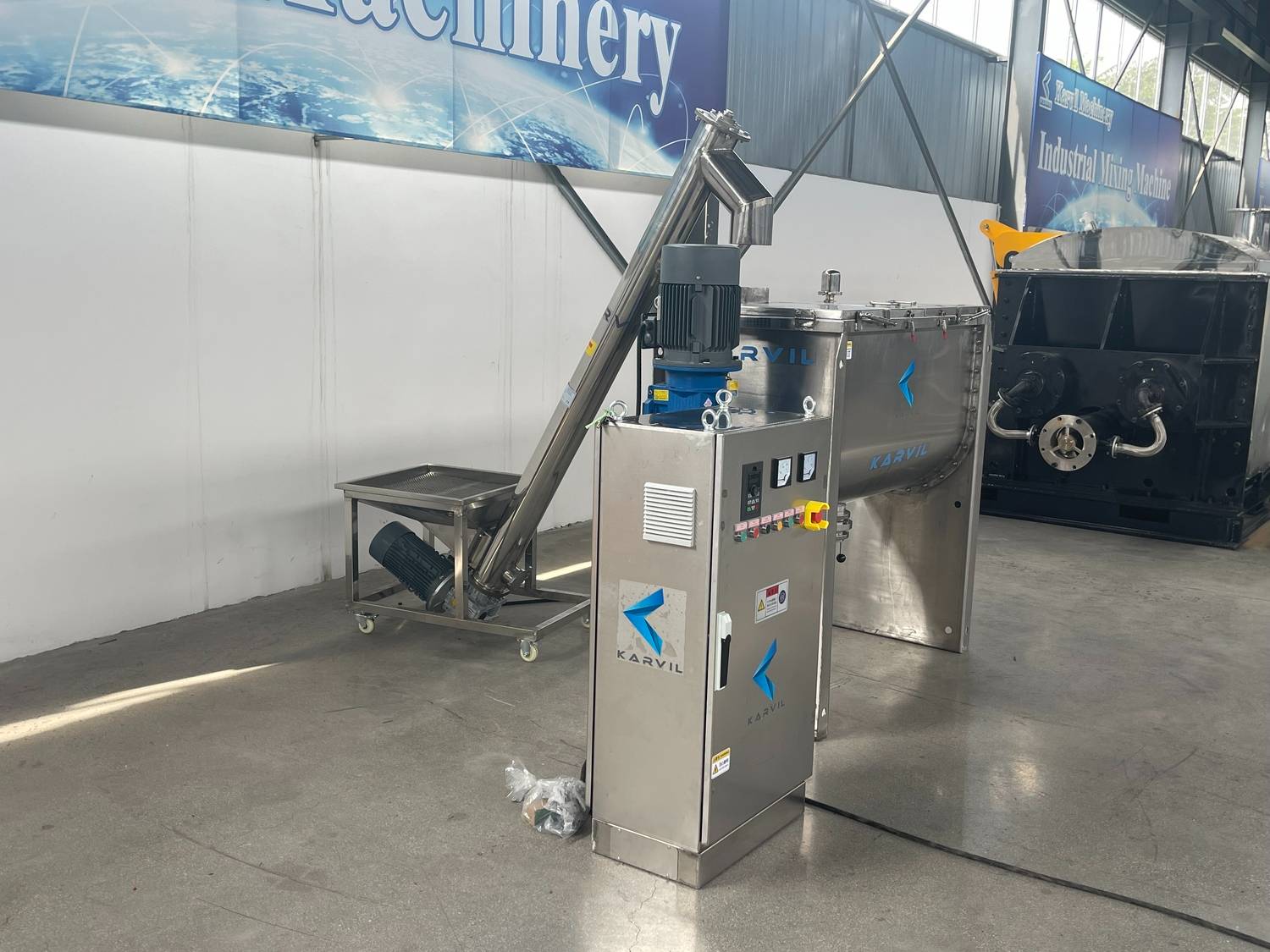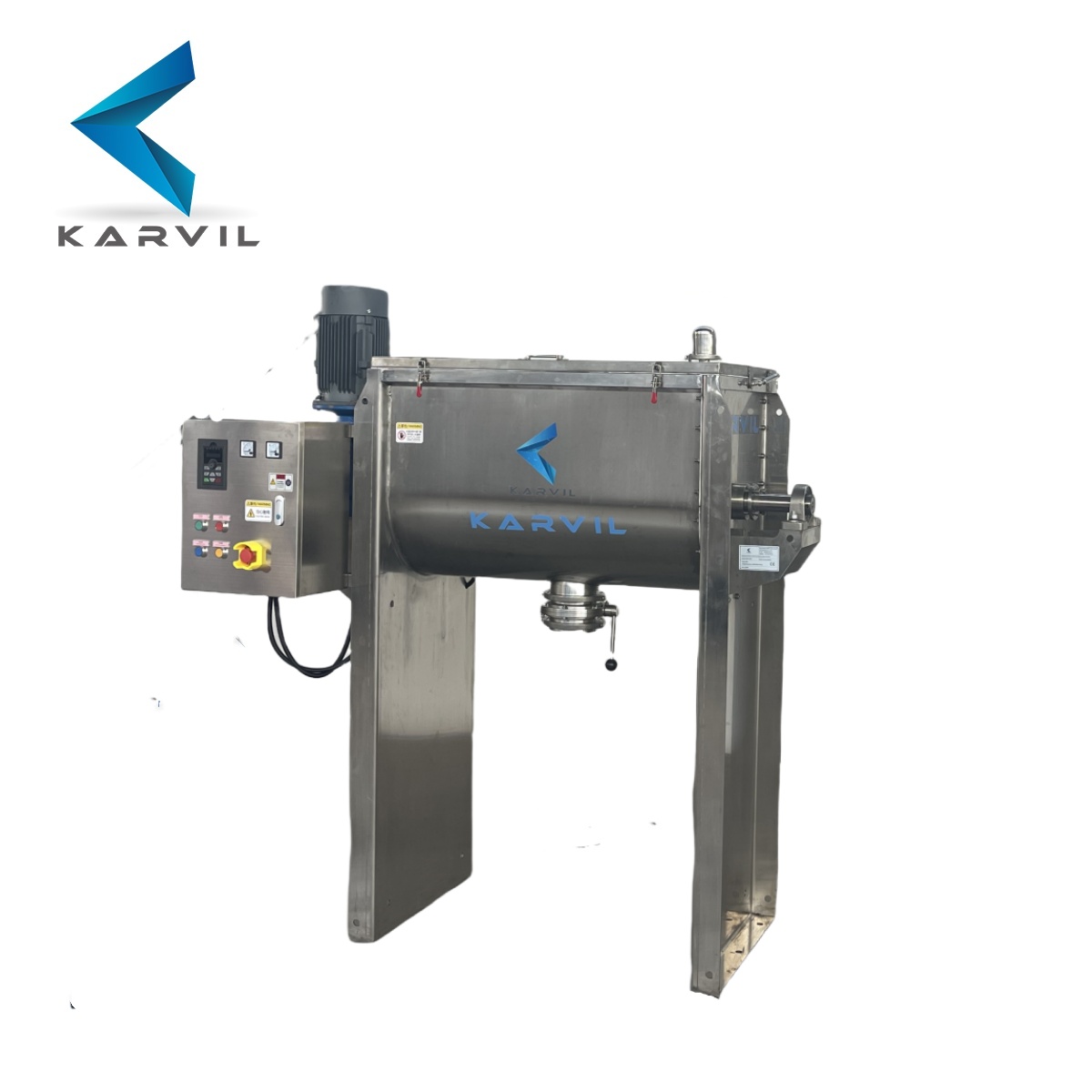Views: 0 Author: Site Editor Publish Time: 2025-08-08 Origin: Site








Have you ever wondered why your ribbon blender isn’t performing at its best? Using a ribbon blender effectively requires more than just turning it on. Proper operation is key to achieving smooth and consistent mixing results while also ensuring safety.In this article, we’ll dive into the essential do’s and don’ts of using a ribbon blender. You’ll learn how to maximize its performance and prevent costly mistakes that can shorten its lifespan or affect your product quality.

The right fill level is crucial for effective mixing. Ideally, your ribbon blender should be filled to about 70% of its capacity. This ensures thorough mixing without straining the motor or agitator.
Underfilling: If you underfill the blender, mixing will be inefficient, leading to inconsistent results.
Overfilling: Overloading the blender can cause the motor to overheat and reduce its lifespan. It may also lead to poor mixing.
Selecting the right materials for your ribbon blender helps prevent corrosion and contamination, especially when dealing with sensitive products like food or pharmaceuticals. Stainless steel is often preferred for its resistance to corrosion and ease of cleaning.
Not all materials work well with every type of ingredient. For instance, acidic or abrasive substances may corrode some metals. Always check that the blender material is compatible with the substances you're mixing.
Regular maintenance is key to keeping your ribbon blender in top shape. Make sure to inspect the agitator shafts, bearings, and seals. Look for signs of wear and tear to prevent breakdowns.
Proper care helps improve performance and extend the blender’s life, making it more cost-effective in the long run.
Safety is critical when operating a ribbon blender. Equip your blender with essential safety features like:
Safety grating to prevent accidents.
Limit switches to stop the machine in case of malfunction.
Dust-tight covers to minimize dust escape.
These measures protect operators and maintain a safer work environment.
A Variable Frequency Drive (VFD) helps your ribbon blender start up smoothly. It reduces stress on the motor and agitator, preventing sudden jolts that could damage components.
This controlled startup helps maintain equipment longevity and smooth operation.
If your production involves frequent agitator removal or other specific needs, talk to your blender supplier. Customizing your equipment ensures it meets your exact requirements and improves efficiency.
A smooth, high-grit polished interior is essential for easy cleaning. It prevents material buildup and reduces the chances of contamination. Proper polishing helps maintain both cleanliness and blender performance.
When working with powders, adequate ventilation is a must, especially in ATEX-rated environments. Ventilation prevents the accumulation of dust, reducing the risk of explosions and ensuring safer operations.
Install ventilation systems that help capture airborne particles and direct them away from workers and sensitive equipment.
Overloading a ribbon blender strains the motor, making it work harder than necessary. When the blender is too full, it can’t mix efficiently. This leads to uneven results and can also wear down the components faster.
Not all materials are suitable for blending together. Using incompatible materials can cause dangerous reactions or contamination. For example, mixing corrosive substances with unprotected metals can damage your equipment and compromise product quality.
Safety features like limit switches and dust-tight covers are crucial for avoiding accidents. Neglecting these can lead to serious injuries. Always ensure that the safety systems are functioning properly before using your blender.
Modifying your ribbon blender without consulting an expert can cause serious problems. Altering its design or replacing parts without proper knowledge can lead to performance issues or even failure. Always consult a professional before making any changes.
Choosing a motor that’s too large can damage your blender. A bigger motor may overload the agitator or other components, leading to premature wear. Always assess your blender’s requirements before upgrading.
Cleaning your ribbon blender thoroughly between uses is crucial to avoid cross-contamination. Residual materials can compromise the quality of the next batch, especially in industries like food and pharmaceuticals.
Damaged components, like worn-out seals or broken wires, can pose serious risks. Not only can they lead to mechanical failure, but they also increase the risk of electrical shock. Always inspect and replace any damaged parts immediately.
Deviating from the manufacturer's guidelines can cause inefficiency and even damage your equipment. Always follow the instructions for proper operation, maintenance, and safety to ensure optimal performance and longevity.

Choosing the right size blender starts with understanding your production needs. A blender that's too small won’t mix enough material, while one that's too large can waste energy and space. Aim for a size that fits your current production volume and allows room for future growth.
The nature of your materials impacts the horsepower needed. Denser, thicker substances require more power to blend efficiently. Likewise, faster mixing speeds may also require a more powerful motor. Always consider the material characteristics and desired mixing speed when determining motor horsepower.
The material of your blender plays a big role in its performance. If you're mixing abrasive substances, you’ll need more durable materials like stainless steel to prevent wear and tear. For food-grade or pharmaceutical applications, materials must be non-reactive and easy to clean to avoid contamination.
Every production line has unique requirements, so a one-size-fits-all blender may not meet your needs. Features like dual agitators, which speed up mixing time, or variable speed controls, which provide flexibility, can improve efficiency. Specialized discharge gates help in controlling how material exits the blender, catering to different production processes.
Safety should always be a top priority. Ribbon blenders should have dust-tight covers to minimize exposure to hazardous particles. Emergency stop buttons and limit switches ensure that operators can quickly stop the machine if something goes wrong. These safety features protect both the operators and the equipment from potential harm.
Uneven mixing often occurs when the blender isn’t filled correctly. If the materials are underfilled, the agitator won’t be able to distribute them evenly. Similarly, overfilling the blender can strain the motor and affect mixing quality.
Adjusting the fill level to about 70% of the blender’s capacity can help. Additionally, tweaking the speed and checking ingredient types for compatibility will help ensure a uniform mix every time.
Excessive wear happens when the blender operates under harsh conditions, like overloading or using incompatible materials. Regular inspections are key. Check the agitator shafts, seals, and bearings to ensure they're not damaged.
Proper maintenance, such as lubrication and part replacement, will help prolong the life of your ribbon blender. Additionally, ensure the correct loading of materials, and choose the right materials to avoid unnecessary stress on the equipment.
If your blender’s motor overheats, it could be due to insufficient ventilation or an oversized motor. To prevent overheating, ensure the motor is the right size for your production needs and that the machine has proper airflow.
Check for any blockages in the ventilation system and clean the motor regularly. Installing a Variable Frequency Drive (VFD) can help by controlling the motor’s start-up, reducing initial stress on the system.
The speed of your ribbon blender and the design of the agitator directly influence how well materials are mixed. Faster speeds may be needed for finer materials or when you want a quicker blend. However, certain materials require slower speeds to avoid damage or separation.
Choosing the right agitator type, such as single or dual ribbons, also plays a key role in efficiency. Dual agitators generally speed up the process and reduce mixing time.
Modern ribbon blenders can be enhanced with technology like sensors and Variable Frequency Drives (VFDs). These systems monitor the blending process, ensuring consistency and minimizing human error. Sensors can detect changes in material flow, while VFDs allow for precise control of speed and power, resulting in more efficient blending.
Automation can further streamline operations by providing real-time adjustments and reducing downtime. These technologies not only improve blend quality but also optimize energy usage.
Well-trained operators are essential to running an efficient blending process. Ongoing training ensures they understand how to properly load materials, adjust speed settings, and monitor the blending process for consistency.
By regularly updating their skills, operators can detect and resolve issues quickly, which reduces downtime and maintains blend quality. This ultimately leads to smoother operations and a more efficient production process.
To get the best performance from your ribbon blender, ensure proper fill levels, choose the right materials, and maintain it regularly. Avoid overloading, using incompatible materials, and neglecting safety.
Always follow safety guidelines, utilize technology for control, and train your operators to improve blending efficiency and safety. Proper care ensures long-lasting and efficient operation.
A: Overloading a ribbon blender occurs when the fill level exceeds its optimal capacity (around 70%). This causes inefficient mixing and may strain the motor, resulting in uneven blends and faster wear.
A: The motor size should match the material characteristics and required mixing speed. For denser materials or faster speeds, a higher horsepower motor is needed. Always assess the material type before selecting motor size.
A: Ribbon blenders are primarily designed for dry mixing. However, they can handle some wet mixtures, such as slurries or pastes, but ensure proper sealing and material compatibility for optimal performance.
A: Regular maintenance, proper cleaning, and using compatible materials are essential to extend your blender’s lifespan. Avoid overloading, ensure correct motor sizing, and inspect key parts like seals and bearings frequently.
Karvil has a professional technical team dedicated to the research, design, and manufacturing of Sigma mixers and ribbon blenders. Our equipment has already been sold to over 50 countries and various industries worldwide.